Animal Index Mammals
BATS

ANIMAL DESCRIPTION
With ten species in Maryland, bats can live in MD all year long while others migrate here in the spring and fall. Bats can be found in almost every type of habitat, from deserts to woodlands and suburbs to cities. The common species are the little brown bat and big brown bat. They live and hunt nocturnally in large colonies or small families. Young bats can occasionally enter houses and will explore for a way out. Bats can be known to carry diseases such as rabies and histoplasmosis. Bats routinely find their way into people's property and can spread disease easily.
SPECIES
- Eastern red bat
- Hoary bat
- Silver-haired bat
- Evening bat
- Eastern small-footed bat
- More
HABITAT
- Woodlands
- Caves
- Suburbs
- Cities
DISEASES
- Rabies
- Histoplasmosis
BEAVERS
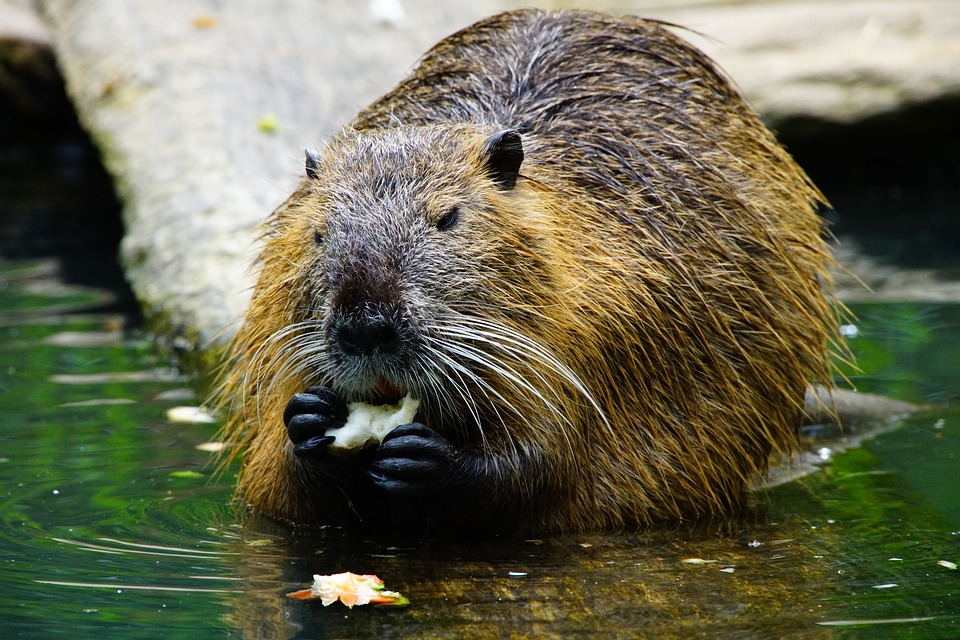
ANIMAL DESCRIPTION
Beavers are among the largest rodents in North America and if left untreated will cut down over 200 trees per year. Living near the water, they will cut down trees to dam up streams and rivers to create ponds for food.
SIGNS
- Dams: Large piles of wood logs and branches blocking streams.
- Beaver lodges: Mound-shaped piles of sticks, branches, mud, and vegetation close to a body of water.
- Beaver slides: Trails of mud created by beavers walking parallel to bodies of water.
- Tree damage: Trees with clearly missing branches and/or a shaved trunk in the process of being cut down.
HABITAT
- Rivers
- Streams
- Ponds
- Lakes
- Marshes
COYOTES
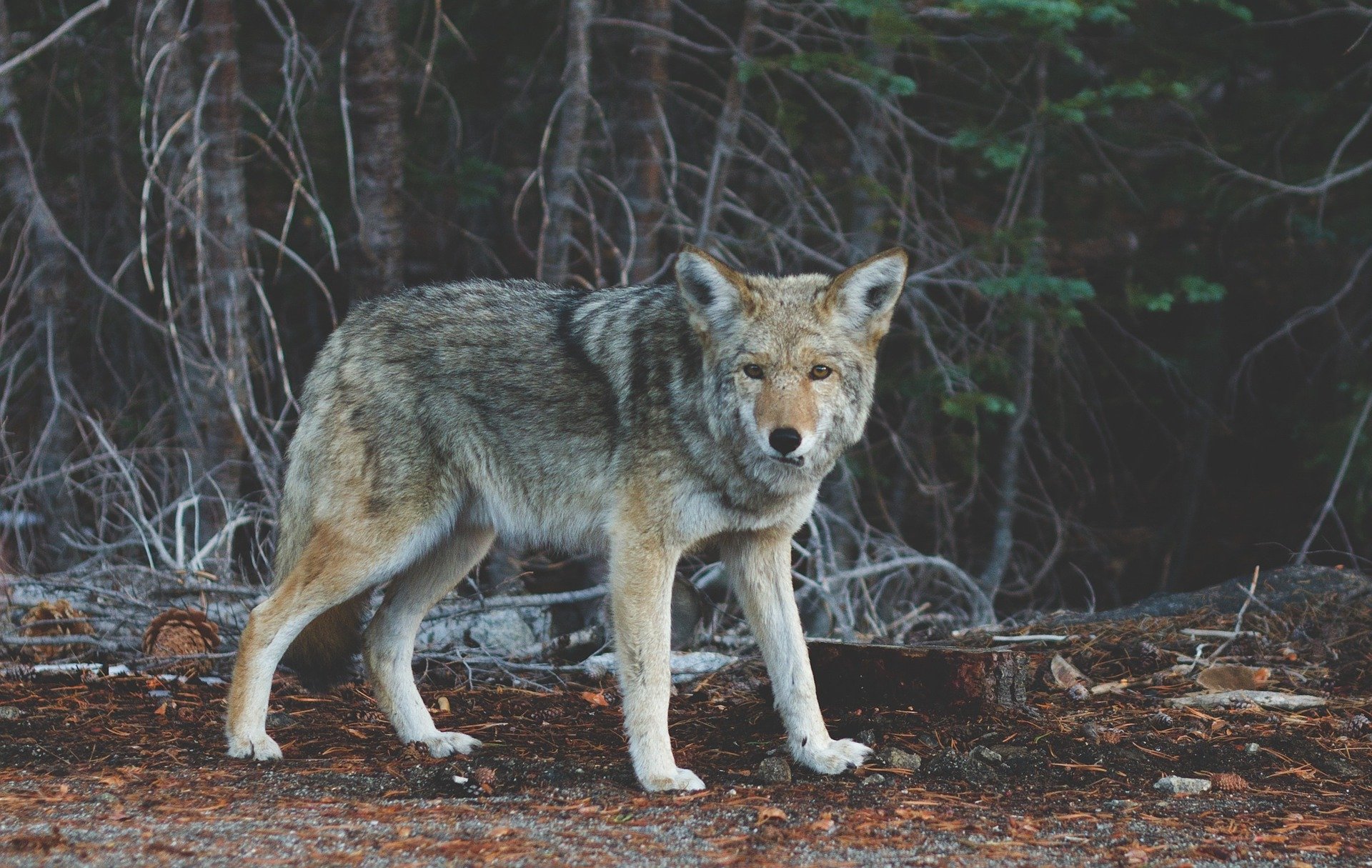
ANIMAL DESCRIPTION
Resembling small German Shephard dogs, coyotes have begun to appear in Western Maryland as early as 1972 and have boomed since then. Coyotes prey on pets and roaming strays in suburban areas and livestock in rural areas. Rapid decline of free roaming animals is a common sign of coyotes.
SIGNS
- Howling: Coyotes will howl at night and sometimes during the day to mark their territory. Howl example
- Scat: Coyote excrement mainly contains hair and bones, unlike that of domestic dogs.
- Tracks: Coyote paws are longer than dog paws, with claws on the front paws and tracks that go in a straight line, with one goal rather than checking out the area.
- Dead animals: The more urbanized an area is, the more desperate coyotes in them will be for food. This leads to killing stray cats and dogs, leaving behind what they can't eat.
HABITAT
- Rural areas: Coyotes are more common to rural, forested areas, due to having more food available.
- Suburban areas: Coyotes can adapt to suburban areas, relying on pets and stray animals for food.
- Urban areas: Coyotes are rare in urban areas, like DC, where they rarely find wild animals in the street.
FOXES

ANIMAL DESCRIPTION
With two species in Maryland, red and gray, foxes resemble small dogs and are a threat to livestock and pets. Some foxes have been known to carry rabies.
SIGNS
- Ruined gardens: When foxes find more food than they can eat, they will bury the leftovers instead of wasting it. This results in dug up lawns and gardens.
- Food: Feeding other animals, such as birds or deer, will attract foxes who will take the food for themselves.
HABITAT
- Rural areas: Foxes are more common to rural, forested areas, due to having more food available.
- Suburban areas: Foxes can adapt to suburban areas, relying on small animals such as lizards, voles, rats, mice, and rabbits for food. They are omnivores, meaning they can further adapt to eating plant life to survive in these areas.
- Urban areas: Coyotes are rare in urban areas, like DC, where they rarely find small animals in the street.
OPOSSUMS
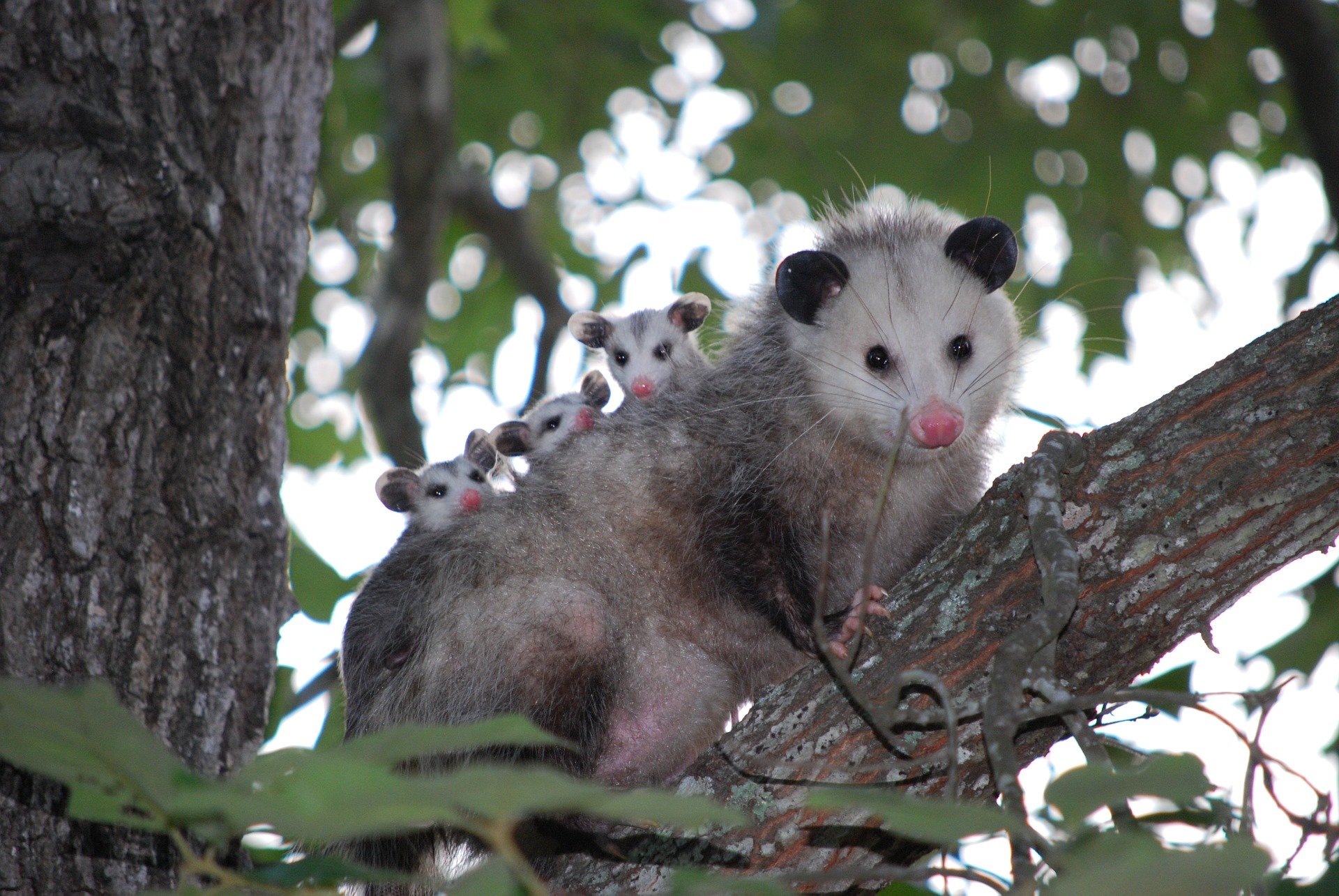
ANIMAL DESCRIPTION
Opossums are marsupials with grayish white fur that covers all but their ears and tail, which is long and scaly. They are abundant in Maryland and prefer woods near water and urban and suburban environments. They are effective in lowering the tick population. They are commonly aggressive scavengers and carry disease.
SIGNS
- Exterior damage: Opossums enter builds by climbing, damaging shingles, gutters, and siding.
- Vocal noises: Opossums make a variety of sounds, such as hissing and shrieking when threatened, to clicking or lip smacking sounds to call their young.
- Scratching noises: When nesting, opossums will scratch at their environment. The scratches differ from that of rodents in that they tend to cover larger areas than just one corner.
HABITAT
- High areas: Opossums prefer nesting in high areas, such as trees, above all else and will nest in attics and other high rooms in buildings.
- Wet areas: Opossums also prefer marshes, swamps, and streams.
RACCOONS
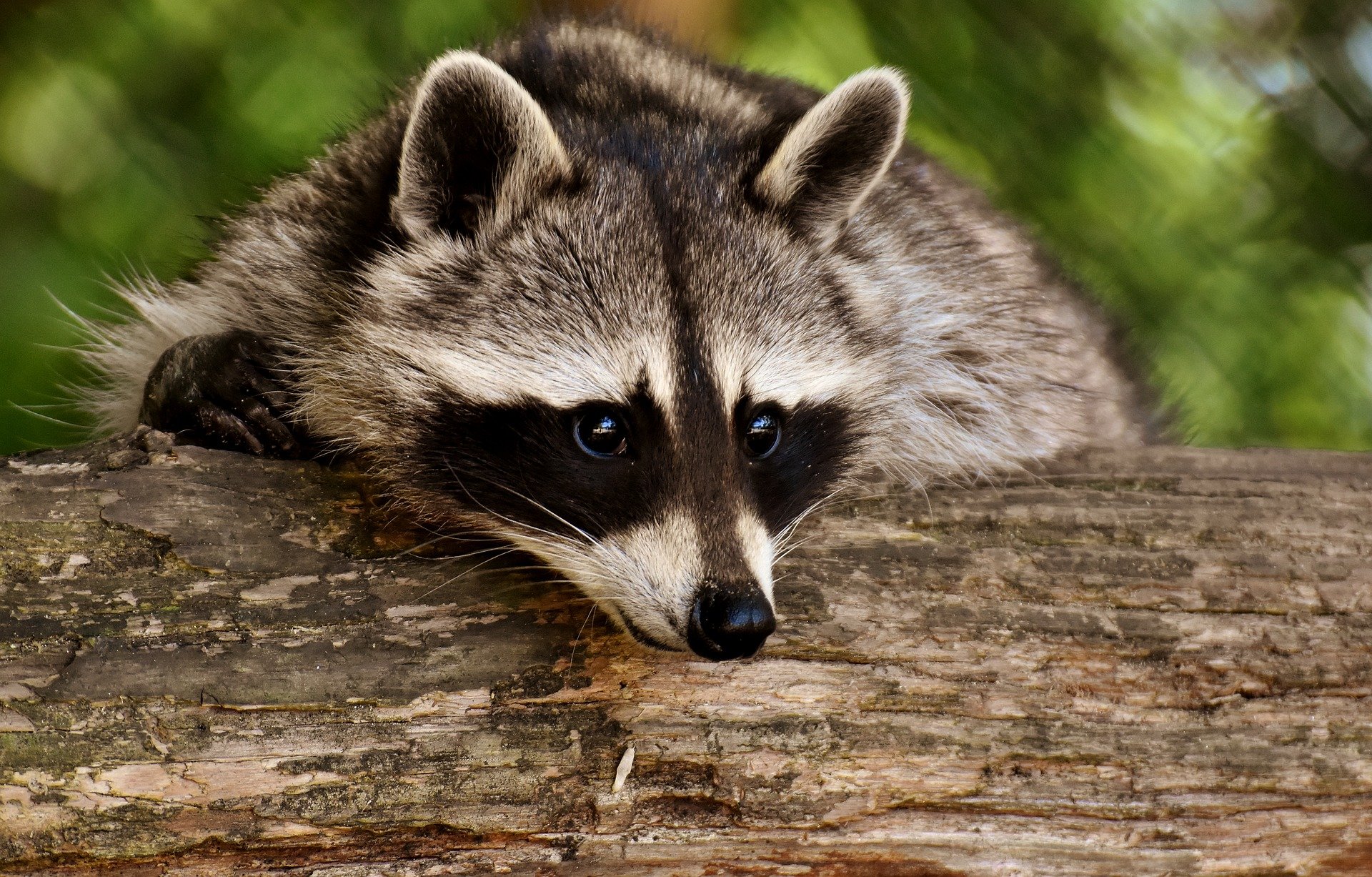
ANIMAL DESCRIPTION
Raccoons are abundant in Maryland, with short legs, a striped tail, grayish black fur, and a telltale black "mask" around their eyes. They are a nuissance to animals and humans, well adapted to urban and suburban areas. They will enter homes, basements, attics, and other structures in search of food. Raccoons cause over 60% of rabies cases in Maryland and can cause canine distemper and parvovirus in domestic dogs.
SIGNS
- Trash: Toppled trashcans and garbage strewn across lawns are the most identifiable sign.
- Prints: Raccoon foot print resemble human foot prints that are 4" long.
- Scratches: Scratch marks and droppings at the base of trees.
HABITAT
- Forests
- Coastal marshes
- Urban areas: Raccoons are commonly associated with eating garbage cans and are common in forested suburban areas, such as the neighborhoods of Southern Maryland.
SKUNKS
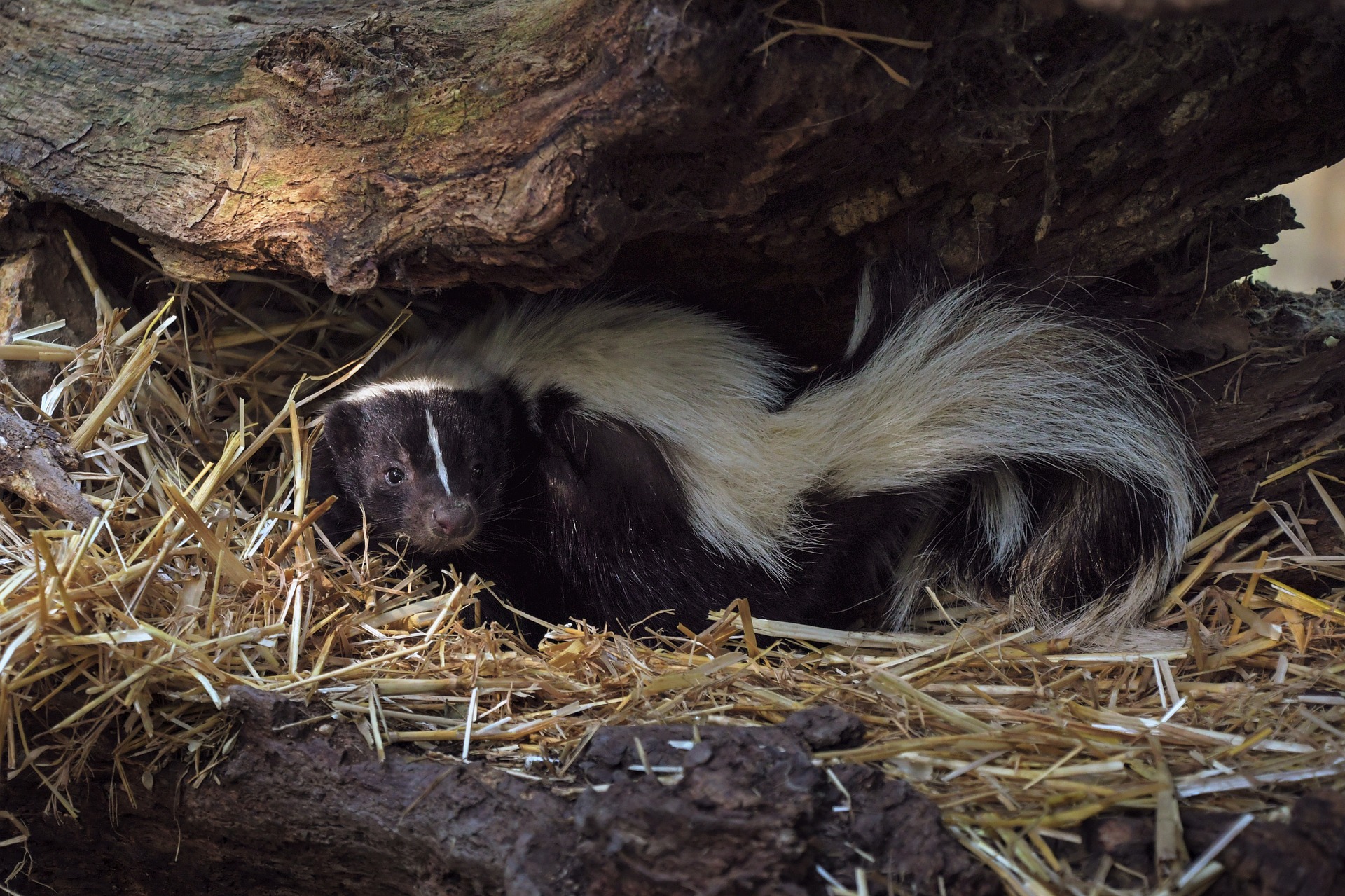
ANIMAL DESCRIPTION
Eastern striped skunks are common in the U.S. and are identified easily by their black fur with two white stripes going down their back. When threatened, skunks will either flee or stand their ground, stomping their front two legs as a warning. If they continue to feel threatened, they will spray butyl mercaptan, a foul smelling liquid, from their backside at their aggressor. Skunks can harass homes and business by scavenging trash and spraying people.
SIGNS
- Smell: The smell of skunk spray
- Ruined lawns: Skunks search for food in yards be digging 3" deep crescent-shaped holes into the dirt.
- Sightings: Skunks mainly look for food at night, and likely have rabies if spotted during the day.
HABITAT
- Forests: Skunks will nest in abandoned burrows
- Grasslands
- Urban/suburban areas: Skunks will nest in abandoned buildings
SQUIRRELS
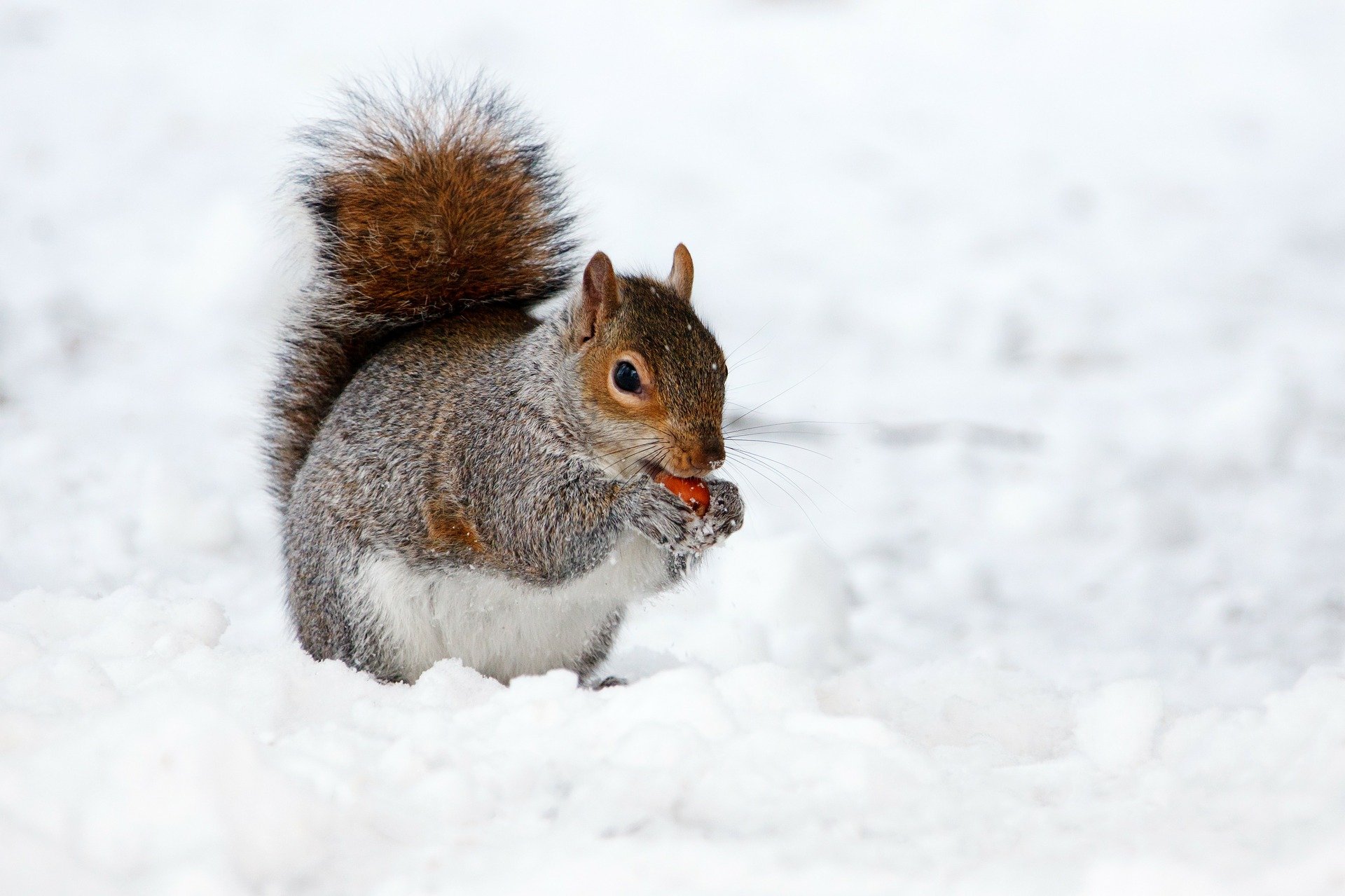
ANIMAL DESCRIPTION
With four species in Maryland being gray, red, flying, and fox, squirrels nest in trees and can be an annoyance in their chattering and barking. Most squirrels in urban areas are rather tame, yet have been know to nest in warm household rooms, such as attics, to escape the cold. Once they have nested in a home, squirrels will chew through insulation and wiring to create fire hazards. They can also infrequently transmit rabies.
SIGNS
- Damage: Squirrels will chew on wires, wood, and walls. They will chew into food containers and bird feeders.
- Scat: Squirrel droppings are commonly found in garages, attics, and near entry points to buildings.
- Decaying smell: If squirrels found their way into your home, some likely aren't making it out. Decaying squirrels, like all animals, release a foul odor.
- Water damage: If a squirrel nest is formed in your house, "water damage" comprised of urine and feces forms in walls and ceilings.
HABITAT
- Forests
- Suburban areas: Squirrels are common in suburban areas, and even moreso in the forested neighborhoods of Maryland.
- Urban areas: Squirrels are less common in cities.